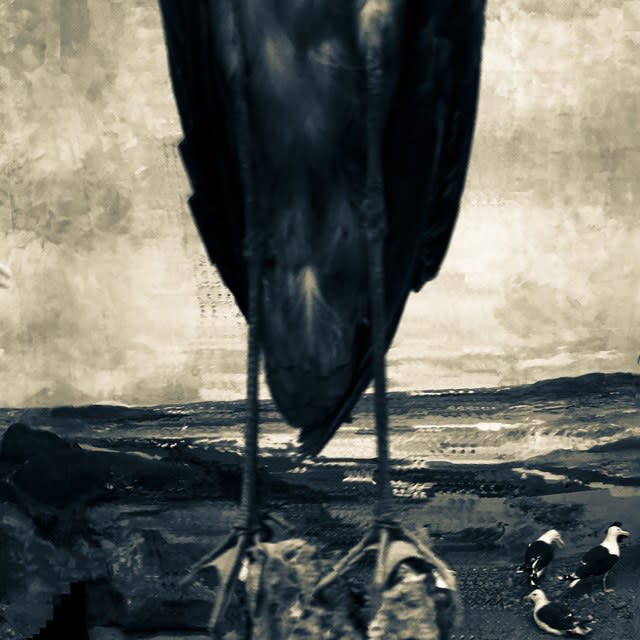Serinyà Catalan-Swedish, b. 1974
My father was a biology teacher. When I was a child, in Girona, he sometimes took me to his laboratory at the school, let me look through the microscopes and allowed me to feed the snakes and lizards of the terrarium. This founded my strong fascination with biology and the origins of life. When, as an adult, I moved to Sweden, a land of forests and lakes, I came in closer contact with nature and found a new way of existing in it. An awareness of the challenges of our environment started growing in me.
When I was invited to do a glitch photography artist project inside the 100-year-old dioramas of the Biological Museum in Stockholm, I didn’t hesitate. My endeavours became the image series Noises from the Silent Land.
The diorama of the Biological Museum is a 360 degree display of the Scandinavian nature, populated by stuffed animals. Dead, nowadays dusty and grey animals, that have been sacrificed in order to tell a story of the Scandinavian landscape and its wildlife. A story meant to awaken love for nature, but to the price of killing some of its inhabitants. It’s a condensation of the anthropocentric world view, where the animals are ours to kill and keep, but also our responsibility to preserve. It’s a realistic, yet completely unreal, image of an idealised environment.
My glitched images show the animals and the landscape of the diorama. But the scenery is broken. The wolf has three eyes - or is it five? The line of the horizon is ragged. The images are broken - defective. Just like the landscape they depict. At a first glance it looks real, but if you stop for a closer look you start distinguishing the details. The surface of the background painting is cracking, the elk’s fur is getting rather thin. And time has frozen.
I have worked for a while with pressing my photographic tools to a point where they can no longer take “correct” images. The Catalan artist Joan Fontcuberta points out that a photography is like a window. You look out and see the scenery outside, but don’t pay any attention to the window glass. It is only if the window gets a crack that we start looking at the glass itself. My photos are like that broken glass. They direct your attention to the layers that are otherwise invisible - the layers that consist of the photographer himself, the camera, the image as an object, the glass.
In this time of “alternative facts” it is becoming increasingly important to see clearly and be aware of what we are actually looking at. The distorting power of photography is based in its invisibility. It gives the impression of just happening and that the outcome represents reality - maybe even that it is reality. You press a button and reality comes out. There is no middle layer. But as a photographer I realise that the image has nothing to do with reality. The camera, the software, the printing, the framing, the location where it is displayed, the medium of display, the context in which it is used, the cropping, the photoshopping. These processes are invisible to most people and this is where manipulation happens. This seemingly natural process is the most unnatural thing. And the layers affect the content of the image. A “reality” that has nothing to do with reality. A virtual reality.
The Swedish photographer Lennart Nilsson showed a whole world how life is created by his wonderful photos of unborn babies. Or, in reality, dead fetuses. He had to depict death in order to talk about life. A paradox, a sort of a lie that emphasizes the truth. The diorama of the Biological Museum is also a lie in itself ‒ its goal being to represent the entire flora and fauna of Scandinavia ‒ a vast region of shifting climate zones. You would never see all these animals up close, you would never spot them together, and the landscape is a construction of “the Scandinavian Landscape”, a result of wishful thinking, an idealisation according to the standards of the Nationalistic era of the turn of the century 1900. This is what the founders wanted their nation to look like.
My aim is to open the eyes of the spectators, so that they start discerning the otherwise invisible layers between their eyes and the object they think they are looking at, in order to awaken a critical outlook on the things taken for granted. We are dependent on photography for awareness of environmental problems. I have never seen the rainforests in real life, yet I am aware of them being threatened, and I care about it ‒ thanks to photography.
Photography is a lie that can be used to talk about the truth.
